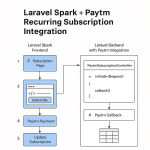Limited Time Offer!
For Less Than the Cost of a Starbucks Coffee, Access All DevOpsSchool Videos on YouTube Unlimitedly.
Master DevOps, SRE, DevSecOps Skills!
Here is a checklist of project DevSecOps assessments:
- Security culture: Does the organization have a strong security culture? Are employees aware of the importance of security and how to protect themselves and the organization from threats?
- Security policies and procedures: Does the organization have a clear set of security policies and procedures in place? Are these policies and procedures enforced?
- Security awareness training: Does the organization provide security awareness training to all employees? Does this training cover the organization’s security policies and procedures, as well as the latest threats and vulnerabilities?
- Vulnerability management: Does the organization have a vulnerability management program in place? Is this program effective in identifying and mitigating vulnerabilities?
- Security automation: Does the organization use security automation tools? Do these tools help to automate security checks and tasks, which can free up time for developers and other team members to focus on other work?
- Security incident response plan: Does the organization have a security incident response plan in place? Is this plan tested regularly to ensure that it is effective?
- Security metrics and monitoring: Does the organization track security metrics and trends? Does this information help to identify areas where security improvements can be made?
- Continuous integration and continuous delivery (CI/CD): Does the organization use CI/CD? Does this help to integrate security into the development process?
- DevSecOps culture: Does the organization have a DevSecOps culture? Are developers, operations, and security teams working together to build secure software?
By following this checklist, you can help to ensure that your organization is implementing DevSecOps in a secure and effective way.
Here are some additional tips for conducting DevSecOps assessments:
- Start with a risk assessment. Identify the organization’s most critical assets and the threats that they face. This will help you to focus your assessment on the areas that are most important.
- Involve all stakeholders. The DevSecOps assessment should involve all stakeholders, including developers, operations, security, and management. This will help to ensure that the assessment is comprehensive and that everyone is on the same page.
- Use a variety of tools and techniques. There are a variety of tools and techniques that can be used to conduct DevSecOps assessments. Choose the tools and techniques that are right for your organization and your needs.
- Be flexible. The DevSecOps assessment should be flexible enough to adapt to the organization’s changing needs.
- Continuously improve. The DevSecOps assessment should be an ongoing process. Make sure to review the results of the assessment regularly and make improvements as needed.
By following these tips, you can help to ensure that your DevSecOps assessment is successful.
Assessing the DevSecOps maturity of a project involves evaluating various aspects of security integration within the software development lifecycle. Here’s a checklist to guide you through conducting project DevSecOps assessments:
1. Security Culture and Awareness:
- Is there a shared understanding of the importance of security among team members?
- Are security practices and responsibilities communicated effectively across the project team?
2. Cross-Functional Collaboration:
- Are development, operations, and security teams collaborating effectively?
- Are there regular cross-functional meetings to discuss security-related matters?
3. Security Policies and Standards:
- Are security policies, standards, and best practices documented and communicated?
- Are these policies aligned with industry regulations and organizational goals?
4. Tooling and Automation:
- Are automated security testing tools integrated into the CI/CD pipeline?
- Is there tooling for vulnerability scanning, code analysis, and compliance checks?
5. Secure Development Practices:
- Are developers trained on secure coding practices?
- Is there adherence to secure coding guidelines during development?
6. Continuous Monitoring:
- Is continuous monitoring of applications and environments in place?
- Are automated security checks performed at each stage of development?
7. Infrastructure as Code (IaC) Security:
- Are security considerations integrated into provisioning infrastructure through IaC?
8. Vulnerability Management:
- Is there a process for identifying, prioritizing, and remediating vulnerabilities?
- Are vulnerabilities addressed promptly based on severity?
9. Incident Response Preparedness:
- Is there an incident response plan in place to handle security breaches?
- Are team members aware of their roles and responsibilities in case of a security incident?
10. Compliance and Auditing:
- Are compliance checks integrated into the CI/CD pipeline?
- Is the project in compliance with relevant industry standards and regulations?
11. Code Reviews and Security Assessments:
- Are security assessments and code reviews conducted regularly?
- Is security assessment feedback integrated into the development process?
12. Documentation and Knowledge Sharing:
- Is documentation available for security practices, configurations, and best practices?
- Is knowledge shared among team members to ensure consistent security implementation?
13. Metrics and KPIs:
- Are relevant metrics tracked to measure the effectiveness of DevSecOps practices?
- Are metrics related to security, development velocity, and collaboration monitored?
14. Continuous Improvement:
- Are regular retrospectives held to review and improve DevSecOps practices?
- Are lessons learned from security incidents incorporated into process enhancements?
15. Training and Skill Enhancement:
- Is there ongoing training to keep the team updated on security trends and tools?
16. Cultural Transformation:
- Is the team fostering a culture where security is everyone’s responsibility?
17. Risk Management:
- Is there a process for identifying, assessing, and mitigating security risks?
18. Transparency and Reporting:
- Is there clear visibility into the security status of the project for stakeholders?
- Are security-related updates communicated effectively to relevant parties?
By using this checklist, you can conduct a thorough assessment of your project’s DevSecOps maturity and identify areas for improvement to enhance security integration and overall development efficiency.



